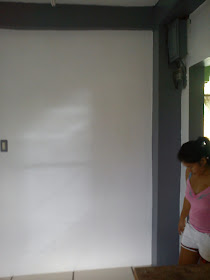For my next project, it's going to be something functional instead of just LED eye-candy. Yes, it still has LEDs on it (I have to have my blinky lights), but that's not all.
This project is a remote-controller AC
Outlet, based on a PIC12F629. It incorporates a 40Khz IR receiver and all of the
IR decoding is done on the PIC. When a POWER_ON IR code is received, it
toggles the state of the AC control line (GP4), which either activates
or deactivates a +12V relay. Right now there is only 1 relay (for one
outlet) and a couple of LEDs on other control lines. Later I want to
have a quad outlet where each outlet is individually controlled. But that means 4 relays, and - I only have one for right now.
This project was inspired when I was scrapping parts out of an old TV set and found a +12V relay in the power supply section (for the degaussing circuit, I'm guessing) and the IR receiver. That led to writing my own routines for decoding 40khz IR codes on the PIC12F629. And after I had remote control, I put it together with the relay.
Yes, I know - it needs a lens over the open hole.
I haven't figured that out yet.
I'm using it to control the Christmas
lights on my patio. Just point the remote at the window facing the patio and *click*
the Christmas lights go on and *click* the Christmas lights go off. Yeah, it doesn't take much to amuse
me.
















.JPG)











